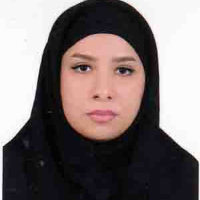Designing a Cognitive Model of Mind Creation Based on Ned Herrmann's Theory to Activate the Thinking Styles of the Fifth- and Sixth-Grade Elementary Students
Thinking styles control abilities and help us better understand why some people are successful in their performance and others are not. It should be noted that thinking styles are relative and different in various situations. Ned Herrmann's theory of the four quadrants of the brain is one of the basic concepts of thinking styles. Ned Herrmann believes that the brain is specialized physically and functionally. He divided the specific function of the brain into four separate parts, each of which has its language, values, and ways of knowing. On the other hand, the current approach to creativity focuses on how the brain system works. From the point of view of cognitive science, creativity should be considered a higher cognitive process. This research aimed to formulate a cognitive model of mind creativity based on Ned Herrmann's theory to activate students' thinking styles.
Based on the purpose, this study was applied research. In terms of collecting data, this study is cross–sectional and analyzes the obtained data using an analytical method. Our study was a type of correlational research based on structural equation modeling. The research population included 3500 fifth– and sixth–grade students of Ardabil City, Iran, studying in the academic year 2021–2022. The researcher went to the Education Administration of Ardabil and obtained the necessary permissions. After dividing the city of Ardabil into five districts (north, south, east, west, and center), 10 primary schools were selected by a simple random method (two schools from each district). The minimum sample size in structural equation modeling is 200. So, after referring to the schools, 200 fifth– and sixth–grade students were recruited using the available sampling method. Next, we used the Observational Checklist of Lateral Superiority Assessment (Chapman & Chapman, 1987), the Abedi Creativity Questionnaire (Abedi, 1993), and the Thinking Styles Inventory (Sternberg & Wagner, 1991) to collect the study data. The inclusion criteria were not participating in the training classes for strengthening the two hemispheres and creativity and not using drugs. Also, the subjects were asked to sign the consent form after reading the details of the study. All their information would remain confidential, as well. Descriptive statistics, including mean, standard deviation, minimum and maximum scores, and variance, were calculated using SPSS version 27 software. Structural equation modeling was used for data analysis using Smart PLS version 3 (partial least squares technique). Also, in the measurement part of the model, where the relationships between the observed variables and the existing variables were examined, convergent validity, composite reliability, T–statistics, and the general criterion of fit (GOF) were used to evaluate the structural part of the model. The significance level was set at 0.01.
The results confirmed the convergent validity of creativity (AVE=0.755), internal reliability of creativity (CR=0.899), the convergent validity of thinking styles (AVE=0.578), and internal reliability of thinking styles (CR=0.946). Brain dominance positively and directly affected creativity (p<0.001, β=0.395). Also, creativity had a positive and direct effect on thinking style (p<0.001, β=0.664), and the model had an acceptable fit (GOF=0.389).
According to the findings of this research, it is possible to use the cognitive model of mind creativity based on Ned Herrmann's theory to activate students' thinking styles.
-
Factors Associated with Relapse from the Perspective of Drug Abusers in Self-Referral Centers Affiliated with the Welfare Organization for Addiction Treatment
*, Maryam Rostami
Journal of Modern Psychology, Autumn 2023 -
Superstition and Its Association with Depression and Anxiety among University Students
*
Journal of Modern Psychology, Spring 2023



